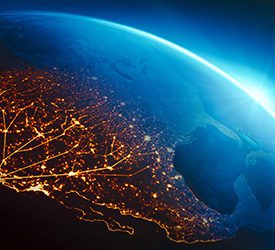A new Zogby International survey of federal agency purchasing decision makers sponsored by Schneider Electric and the Alliance to Save Energy shows 74 percent agree energy efficiency is among the most powerful means of meeting increasing energy needs, achieving cost savings and reducing greenhouse gas emissions. As someone who firmly believes energy efficiency has an enormous role to play in helping agencies be better stewards of the environment and taxpayer money, as well as create jobs and secure our energy future, I find this very encouraging. But while this finding in the survey indicates a favorable attitude towards energy efficiency, other findings clearly point to a need to invest further to reach their goals. I thought a review of these results would be a great focus for my second blog in this series.
The independent survey of 204 government leaders asked participants 15 questions exploring perceptions of energy efficiency within their agencies including importance and main drivers for improving energy efficiency as well as progress towards goals and obstacles to meeting those goals.
Responses indicate that agencies recognize energy as essential to their core mission with a vast majority (87 percent) saying so. Over seven in ten (71 percent) realize their mission effectiveness is vulnerable because of that and their dependency on the commercial electrical grid which is prone to disruptions. However, when asked to indicate the most important reason driving their agencies efforts to become energy efficient, 45 percent said cost savings and 17 percent said environmental benefits while only 3% said enhancing energy security. The reality is, the cost savings and the environmental benefits lead to energy & national security which is the outcome we should all aspire to. A recent article on clean energy for the military summed this up well. And, energy efficiency is the cleanest, cheapest source of energy.
Unfortunately, while almost three quarters of respondents believe energy efficiency is the key to meeting their energy goals, only 56 percent say their current culture encourages energy efficiency. And, only 29 percent said energy efficiency is among the agency’s top five priorities, with 27 percent listing it as a low priority. Not surprisingly then, the majority of respondents grade their progress on meeting recent energy efficiency mandates at a B (38 percent) or C (31 percent) level, with only 6 percent grading their agency’s efforts at the A level.
But besides a culture that does not fully support energy efficiency efforts, agencies face other obstacles. 70 percent of those surveyed believe the current economic environment and potential tightening of their agency’s budget affects their ability to pursue energy efficiency projects. What we see as an outcome of the cultural and economic environment, is agency decision makers ranking funding shortfalls and organizational barriers as the top obstacles to meeting energy efficiency goals:
- Lack of funding (37 percent)
- Organizational barriers, including lack of enthusiasm to execute (38 percent)
Finally, dispite the fact that 70% sited funding challenges as a major obstacle and nearly half (45%) cited cost savings as the main driver for energy efficiency projects , only 14% have leveraged energy savings performance contracts or utility energy savings contracts following the 2011 White House Memorandum. It is encouraging though, that 30% plan to enter into an ESPC/UESC before the end of 2013. Performance contracts are an ideal vehicle to accomplish energy efficiency goals in a budget constrained environment, leveraging private sector financing to pay the upfront capital and guaranteed savings to pay back the loan.
There are several additional findings that provide excellent insights into agency progress and attitudes towards energy efficiency. I encourage you to read the full report.
In Mission Impossible II, Dr. Nekhorvich states, “Every search for a hero must begin with something which every hero requires, a villain.” For the energy efficiency “hero”, the villains are many – rising energy costs, climate change, increasing energy needs and a fragile commercial grid. But the hero won’t come out on top without a life cycle approach and proper investment of human, social and financial capital.
The energy that is so essential to the core missions of federal agencies is costly, placing a significant burden on agency budgets, a sizeable footprint on the environment and compromising resiliency. These survey results show that the majority of agency leaders recognize the true villains and heroes. While they are working diligently to increase energy efficiency to achieve their mission and lead by example to secure our nation’s energy future, there is evidence that agencies need to do more, to invest in energy efficiency to save taxpayers money, protect the environment and assure their missions.



